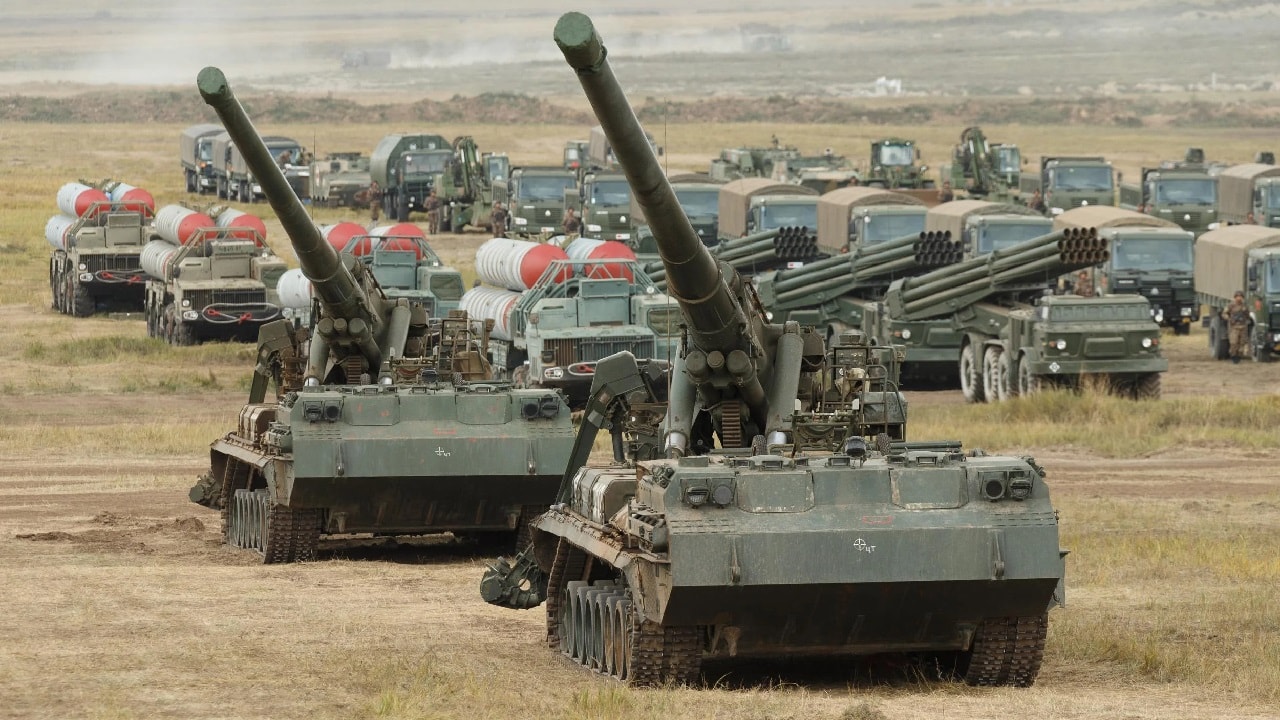Russia’s Strategy in Ukraine – Siege Warfare: On day 21 of the Russian invasion of Ukraine, the Russian campaign continues to focus on siege warfare against the major Ukrainian cities in the absence of significant advances elsewhere.
All the major Ukrainian cities continue to resist, but the Russian forces are pounding them.
No Appreciable Russian Advances, Only Mounting Casualties
Three weeks into an invasion that was supposed to last from 48 to 72 hours, Russian forces have made limited to no progress in achieving their primary objectives, the U.S. Department of Defense assessed on Tuesday. Although Kyiv continues to suffer heavy damage and civilian casualties from Russian long-range bombardment, the leading Russian forces have not made any appreciable advances toward the Ukrainian capital. Indeed, Russian forces are approximately 9 to 12 miles from the city on the northwest and 12 to 19 miles on the northeast. But that is where they have been since the very first days of the war.
According to the Pentagon, Moscow has fired about 950 ballistic missiles of all types into Ukraine, and both sides retain approximately 90 percent of their combat power.
The Ukrainian Ministry of Defense claimed that as of Wednesday, Ukrainian forces have killed, wounded, or captured approximately 13,800 Russian troops, destroyed 84 fighter, attack, and transport jets, 108 helicopters, 430 tanks, 190 artillery pieces, 1,375 armored personnel carriers, 70 Multiple Launch Rocket Systems (MLRS), two boats, 819 vehicles, 60 fuel tanks, 43 anti-aircraft batteries, and 11 unmanned aerial systems.
The accuracy of official numbers is always open to questioning. However, independent reporting of Russian casualties indicates that the Russian forces have lost more than 1,000 vehicles of all types, including tanks, fighter jets, and helicopters.
Ukrainian forces attacked the occupied Kherson Air Base with long-range fires, destroying several Russian helicopters on the ground and damaging the forward air base’s infrastructure. This is the second time the Ukrainian military strikes at the Russian-controlled airbase since it was lost a few days ago.
The U.S., NATO, and the European Union continue to provide Ukraine with military and humanitarian aid. In addition to the highly successful FGM-148 Javelin anti-tank and FIM-92 Stinger anti-aircraft weapons, there are reports that suggest the U.S. is considering sending Ukraine the Switchblade “killer drones.”
Expanding Target Sets
The strike against the Ukrainian military camp in the western part of the country, and only 11 miles from the Polish border, shows that the Russian Aerospace Force is still capable of long-range strikes. Despite a conspicuous absence from the skies over Ukraine, the Russian aircraft launched several air-to-ground ballistic missiles from within Russian air space and struck the Ukrainian military training camp, killing dozens and wounding hundreds of military personnel and civilians.
However, U.S. officials have cautioned against taking this strike as a message from Moscow.
“They are clearly expanding some of their target sets here. I can’t get into their heads and to tell you exactly what was behind that target on that day with that many cruise missiles. I don’t want to just reduce this to some sort of signaling,” Pentagon Press Secretary John Kirby said about the airstrikes.
1945’s New Defense and National Security Columnist, Stavros Atlamazoglou is a seasoned defense journalist specializing in special operations, a Hellenic Army veteran (national service with the 575th Marine Battalion and Army HQ), and a Johns Hopkins University graduate. His work has been featured in Business Insider, Sandboxx, and SOFREP.

